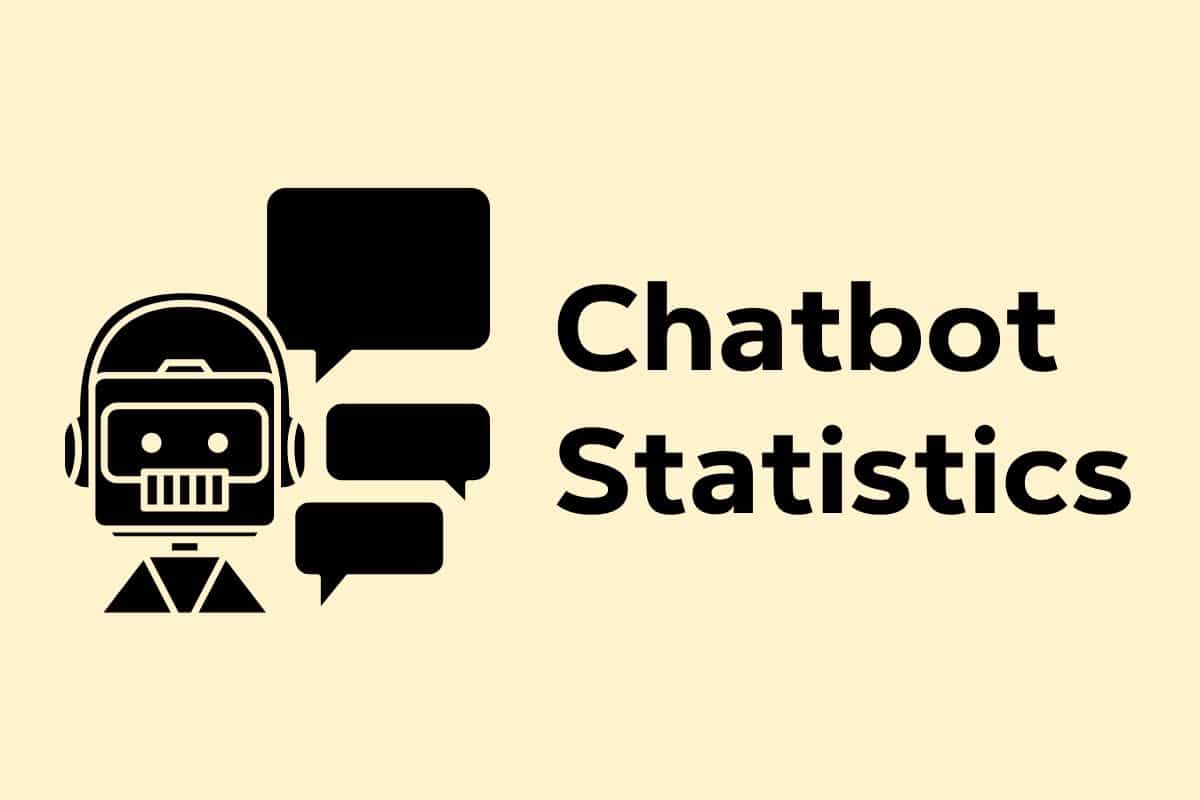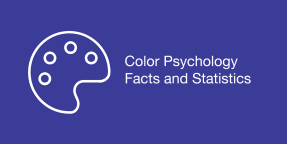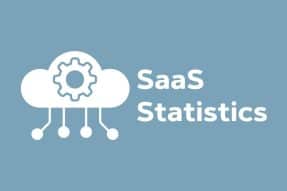Chatbot Statistics (How Many People Use Chatbots?)
Are you ready to delve with us into the world of exciting chatbot statistics?
Thanks to artificial-intelligence-powered virtual assistants, chatbots, customer service and engagement are changing.
Two main benefits make chatbots as popular as they are, 1) they offer instant support, and 2) they offer support 24/7.
Plus, they are excellent companions of human agents, which can take customer satisfaction to the next level.
In this article, we unravel the fascinating insights and trends that shape the world of automated conversations.
We explore the data-driven landscape of chatbot performance, from customer engagement metrics to response times, user satisfaction rates, and cost savings.
Let’s go.
This post covers:
- How Many People Use Chatbots?
- General Chatbot Usage Statistics
- Chatbot Market Statistics
- Chatbot Customer Support Statistics
- Chatbot Conversion Statistics
- Chatbot Challenges Statistics
- Other Chatbot Statistics
Chatbot Statistics (Our Top Picks)
- Nearly 90% of people had at least one chatbot conversation
- Approximately 1.5 billion people are using chatbots
- 22% of micro-businesses use chatbots
- 62% of consumers would talk to a chatbot than wait for a human agent
- Companies with fewer employees use chatbots more
- The chatbot market is expected to grow to $1.25 billion by 2025
- 63% of executives believe AI can offer a terrific one-to-one person-like experience
- Businesses can save up to 30% on their customer support costs by using chatbots
- Quality bots and engaged audiences can generate 90% response rates
- 60% of consumers abandon chatbots because their issues are too complex or unique
How Many People Use Chatbots?
1. Nearly 90% of people had at least one chatbot conversation
Tidio found that in 2022, 88% of people encountered at least one chatbot conversation. (And seven out of ten customers have had a positive experience.)
At this stage, it’s safe to say that nearly everyone has at least heard of chatbots and knows what they are. And we could roughly state that everyone has had a conversation with a chatbot in their lives.
You also don’t want to miss these must-know customer experience statistics.
Source: Tidio
2. Approximately 1.5 billion people are using chatbots
While the above percentage may not reveal too much, this one does. Around 1.5 billion people worldwide are using chatbots, with countries with the largest shares being the United States, India, Germany, the United Kingdom and Brazil.
It’s also said that chatbots will become the primary customer service channel for a quarter of businesses by 2027.
Have you seen our customer service statistics yet? (Find out how important customer service is.)
Source: Tidio
General Chatbot Usage Statistics
3. 22% of micro-businesses use chatbots
Businesses of all sizes benefit from using chatbots in one way or another. The most common usage of chatbots is among micro businesses, followed by small businesses, big businesses and medium businesses.
| Business size | Plan to use chabtots | Plan to use chabtots | Won’t use chatbots |
| Micro | 22% | 43% | 22% |
| Small | 20% | 60% | 18% |
| Medium | 11% | 80% | 9% |
| Big | 12% | 71% | 17% |
From the table above, it looks like smaller businesses are adopting the technology faster than larger ones.
Source: Tidio
4. 62% of consumers would talk to a chatbot than wait for a human agent
Even though a much higher percentage of people aren’t willing to wait for a human agent and prefer to talk to a chatbot, 38% would still wait for a human.
This tells you that it’s best to offer both options, a live chat with a human agent and a chatbot with instant replies.
| Reason for interaction | Human | Chatbot |
| Checking order status | 29% | 71% |
| Searching for products | 33% | 67% |
| Getting info about deals/discounts | 38% | 62% |
| Ordering food | 41% | 59% |
| Booking a meeting | 42% | 58% |
| Leaving contact details | 42% | 58% |
| Making a payment | 46% | 54% |
| Returning a product | 54% | 46% |
| Troubleshooting | 60% | 40% |
| Complaints | 72% | 28% |
Source: Tidio
5. 58% of B2B and 42% of B2C companies use chatbots
You will find B2B companies use chatbots more often than B2C companies.
Fun fact: Chatbots are a great strategy for capturing business leads, so the 16% gap between B2B and B2C in chatbot usage makes sense.
Don’t forget to check out insightful lead generation statistics.
Source: OvationCXM
6. 65% of internet and software companies use chatbots
The largest share of chatbot usage goes to internet and software companies – 65.1%. All the other industries take a much smaller piece of the pie.
For instance, 8.4% of professional services companies use it, 6.6% in the healthcare segment and nearly 4% in the consumer discretionary section, to name a few.
Source: OvationCXM
7. Companies with fewer employees use chatbots more
If a small business wants to compete with the big players but doesn’t have the resources to hire new staff members, technology can help them keep up with the fast pace.
That’s why companies with fewer employees (below 250) are more likely to use chatbots than larger ones. The larger companies usually have employed staff that takes care of customer service/support.
| Number of employees | Share of sites using chatbots |
| 1-10 | 39.2% |
| 11-50 | 32% |
| 51-250 | 16.3% |
| 251-1,000 | 3.6% |
| 1,000+ | 8.9% |
Source: OvationCXM
Chatbot Market Statistics
8. The chatbot market is expected to grow to $1.25 billion by 2025
The usage and adoption of chatbots is increasing rapidly. The market was worth only $190.8 million in 2016, but it’s expected to grow significantly over the coming years.
Source: Statista #1
9. The artificial intelligence market is forecast to reach $118.6 billion by 2025
It’s also worth looking at the bigger picture at this stage, the artificial intelligence software, that was valued at $9.5 billion in 2018 but is expected to hit $118.6 billion by 2025. Chatbots are only a tiny segment of the AI market.
Source: Statista #2
10. Chatbots are the fastest-growing brand communication channel
Between 2019 and 2020, chatbots grew the most among the common brand communication channels – an over 90% use increase. And there’s no sign of usage stopping, at least what we can see from the prediction above.
Source: Drift #1
11. Two-thirds of top global financial firms added chatbots to their apps
Around 66% of the leading international financial firms have a chatbot in their application. Moreover, using chatbots in online banking is also very popular (including voice-based experiences).
Source: Forrester
12. The healthcare chatbot market to surpass $543 million by 2027
The use of chatbots is expanding everywhere. According to Market Research Future, the healthcare chatbot market is expected to reach the half-billion-dollar milestone in value by 2027 (at a growth of 19.5% CAGR).
Source: GlobeNewswire
13. It’s expected that chatbots will handle up to 90% of queries
For 2022, it was said the chatbots would take 75-90% of queries, saving businesses around the world more than $8 billion per year.
Moreover, according to Gartner, around one in six of all global customer service interactions will go through artificial intelligence, including chatbots. That’s also one of the reasons why half of the world’s enterprises (Google, Facebook, etc.) will spend more money on chatbots than mobile applications.
Source: Juniper Research, Gartner
Chatbot Customer Support Statistics
14. Almost 30% of customers don’t know if their last customer service chat was with a human or a chatbot
What this tells you is that chatbots are becoming better and better, offering a much more personalized, human-like interaction.
When 27% of customers say they aren’t exactly sure if their last customer service interaction was with a human or a chatbot, you know the quality of AI is becoming very personalized.
Source: PWC
15. 63% of executives believe AI can offer a terrific one-to-one person-like experience
Not only can AI and chatbots reduce the time to get the tailored answers requested, but 63% of executives also believe that artificial intelligence has come to the point of delivering a fantastic one-to-one personalized customer experience.
Source: PWC
16. Almost one in six global customer service interactions is held by AI
In 2022, almost one in six global customer service interactions was held by conversational artificial intelligence. AI and chatbots are helping companies around the world by offering better and faster customer service to grow their businesses.
Source: CloudFactory
17. Almost 70% of consumers worldwide use chatbots for customer support
The practicality of the chatbot ensures quick answers to simple and low-complex queries. And that’s why nearly 70% of global consumers use chatbots for customer support. It’s also said that a whopping 85% of all customer interaction will be handled through a bot.
Source: Invesp
18. 40% of consumers don’t mind if it’s a bot or a human they’re getting support from as long as their query is sorted
When you have a question and get the answer in as quickly as a few seconds, who cares who it is from, a chatbot or a human agent. And that’s what 40% of consumers say; they’re perfectly fine if a robot helps them.
Source: Invesp
19. Businesses can save up to 30% on their customer support costs by using chatbots
Do you want to save money because you have an investment to make? One of the best ways is to implement a chatbot into your customer support because it can reduce up to 30% of your cost.
Remember, chatbots can handle anywhere up to 80% of routine tasks and customer questions. Instead of your staff running everything, let them take only the 20%, which are usually complex or very personalized support requests.
Source: IBM
20. The 24/7 service is one of the consumers’ biggest benefits of chatbots
When asking consumers what are the biggest benefits of chatbots on websites (have you checked our website statistics?), most reported having 24/7 service always available.
Source: Drift #2
Chatbot Conversion Statistics
21. Quality bots and engaged audiences can generate 90% response rates
Okay, this percentage goes to businesses that mastered the use of chatbots and have highly engaged customers.
However, even when it comes to low-performers, chatbot experiences can still generate response rates between 35-40%.
Source: Matthew Barby
22. Over 50% of businesses using chatbots generate more high-quality leads
If your business heavily relies on lead generation (don’t all?), investing in implementing a chatbot can raise the quality of your leads. 55% of companies report better quality leads because of the chatbot they use.
Keep in mind, because your chatbot can be available 24/7, you can also collect new leads 24/7.
Moreover, Leadoo reports a 20% or more discussion-to-lead conversion rate.
Source: Drift #1
23. Chatbots can increase website conversions by 100%
Can you imagine? A 100% increase in conversion rate? Okay, hype aside, Leadoo’s data shows that websites that use chatbots can boost conversion rates from 10-100%.
The improvements in conversions depend on various factors, like industry, the quality of chatbots (great conversations can ramp up conversions by 30%), etc.
Source: Leadoo
24. Online stores can increase revenue by 7-25% when using Facebook Messenger Checkbox and an abandonment cart conversational commerce
While eCommerce websites can see much better results when integrating the Facebook Messenger Checkbox, they can take things to the next level when combining it with an abandonment cart conversational commerce. Online store owners that combine the two see a 7-25% revenue boost.
Don’t forget to check our extensive shopping cart abandonment statistics.
Source: Chatbots Magazine
25. Almost 60% of businesses say chatbots deliver significant ROI for a small investment
Not only will a chatbot save you money (as you’ve learned earlier), but it can also massively improve your ROI for a small investment, according to 57% of business owners. In addition to that, business leaders said chatbots have increased their sales by a whopping 67%.
Source: Colorlib
Chatbot Challenges Statistics
26. 60% of people prefer to wait for a human agent than to interact with a chatbot
Even though chatbots improved by a lot, there are still many people who prefer to wait in a queue to speak to a human agent than to interact with a chatbot first. The other 40% don’t mind receiving quick help from a chatbot.
Source: Userlike
27. 60% of people believe a human would better understand their needs than a chatbot
Even though 48% of people prefer a chatbot that solves their issues over a chatbot with personality, 60% of them still believe that a human agent would better understand their needs than a “robot.”
Luckily, chatbots deliver excellent support and answers but lack empathy and accuracy regarding complex issues.
Source: Business Insider
28. 9% of people say companies should never use a chatbot
Luckily, few people (less than 10%) think companies should never use a chatbot. Maybe this 9% of people had a bad experience? Or maybe they thought they were speaking to a human, but it was actually a robot?
When people were asked about the main characteristics a chatbot should have, these are the five most common:
- A chatbot should be friendly
- A chatbot should always tell you it’s a robot
- A chatbot should always give you the option to speak to a human agent
- A chatbot should only be used initially
- A chatbot should only be used to learn about the matter of the issue, then transferred to an agent
Source: Userlike
29. 60% of consumers abandon chatbots because their issues are too complex or unique
One of the main reasons consumers give up on a chatbot and move to a human agent is because their issues are too complex or unique/unusual.
| What consumers give up on a chatbot | Share of respondents |
| Too complex issues | 60% |
| Bot redirects to FAQs | 41% |
| Too long respond time | 18% |
| Impersonal conversation | 13% |
Source: CGS
30. Many people think companies are switching to all-chatbot responses too quickly
In a US and UK study, many respondents reported that companies are switching to an all-chatbot customer support/service too quickly, which makes it harder for them to reach an actual human rep.
| Age | US | UK |
| 18-24 | 33% | 32% |
| 25-34 | 37% | 51% |
| 35-44 | 60% | 61% |
| 45-54 | 43% | 59% |
| 55-64 | 42% | 53% |
| 65+ | 55% | 67% |
Source: CGS
Other Chatbot Statistics
31. It takes 10 messages or less to resolve most queries
Tidio found that nearly 90% of customer queries are resolved in ten or fewer messages. This shows that chatbot conversations are short (and usually successful).
Source: Tidio
32. Business owners using chatbot templates are most satisfied
When comparing four styles of chatbots, business owners that use chatbot templates out-of-the-box, without modifying them, report the highest satisfaction rate. The least satisfied are businesses that hire someone outside their organization to design their bots.
Source: Tidio
33. Upselling chatbots have the highest conversion rates (20%), exit-intent the lowest
| Use case | Average chatbot interaction rates |
| Upselling chatbots | 20% |
| AI chatbots | 19% |
| Discount chatbots | 14% |
| Cart abandonment chatbots | 11% |
| Chatbots for ordering phone calls | 11% |
| Lead generation chatbots | 10% |
| CSAT survey bots | 6% |
| Chatbots created from scratch | 4% |
| Product recommendation chatbots | 4% |
| Exit-intent chatbots | 1% |
Source: Tidio
34. Almost 30% of customers expect 24/7 help from chatbots
The biggest expectation for 29% of customers is that the chatbot offers 24/7 support. Customers least expect to receive personalized messages.
| Expectation | Share of respondents |
| 24/7 support | 29% |
| Fast replies | 24% |
| Having access to human agent | 17% |
| Using messages instead of a search bar | 11% |
| No need to talk with anyone | 11% |
| Personalized messages | 8% |
Source: Tidio
35. 53% of customers are most frustrated about being put on hold
The biggest frustration of customers when reaching out to customer service is being put on hold or waiting too long for responses. Surprisingly, the second most common frustration is agents being rude or impolite (hm, that never happened to me – everyone is always so kind).
| Frustration | Share of respondents |
| Put on hold/waiting too long for responses | 53% |
| Rude or impolite agents | 47% |
| Explaining problems to multiple people, multiple times | 41% |
| No updates on my problems | 36% |
Source: Tidio
Conclusion
Through our comprehensive chatbot statistics, we hope you’ve gained valuable insights into the potential this transformative technology brings.
By harnessing the data generated by chatbots, businesses can drive efficiency, enhance customer satisfaction and unlock significant cost savings.
Technology and automation work wonders.
Remember, the chatbot landscape is evolving rapidly, with advancements in natural language processing, machine learning and sentiment analysis shaping the future of (even more personalized) automated conversations.
Step into the data-driven future, where chatbots serve as trusted companions on your journey to success.








Comments (0)